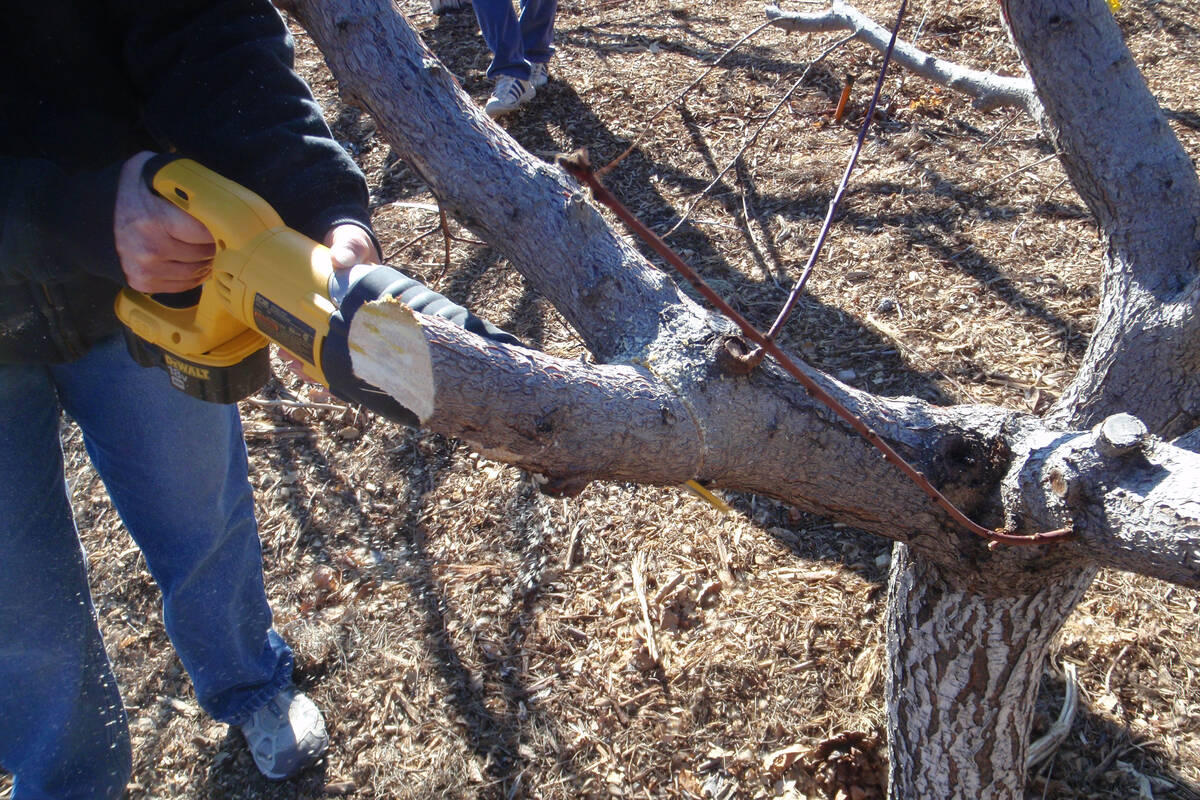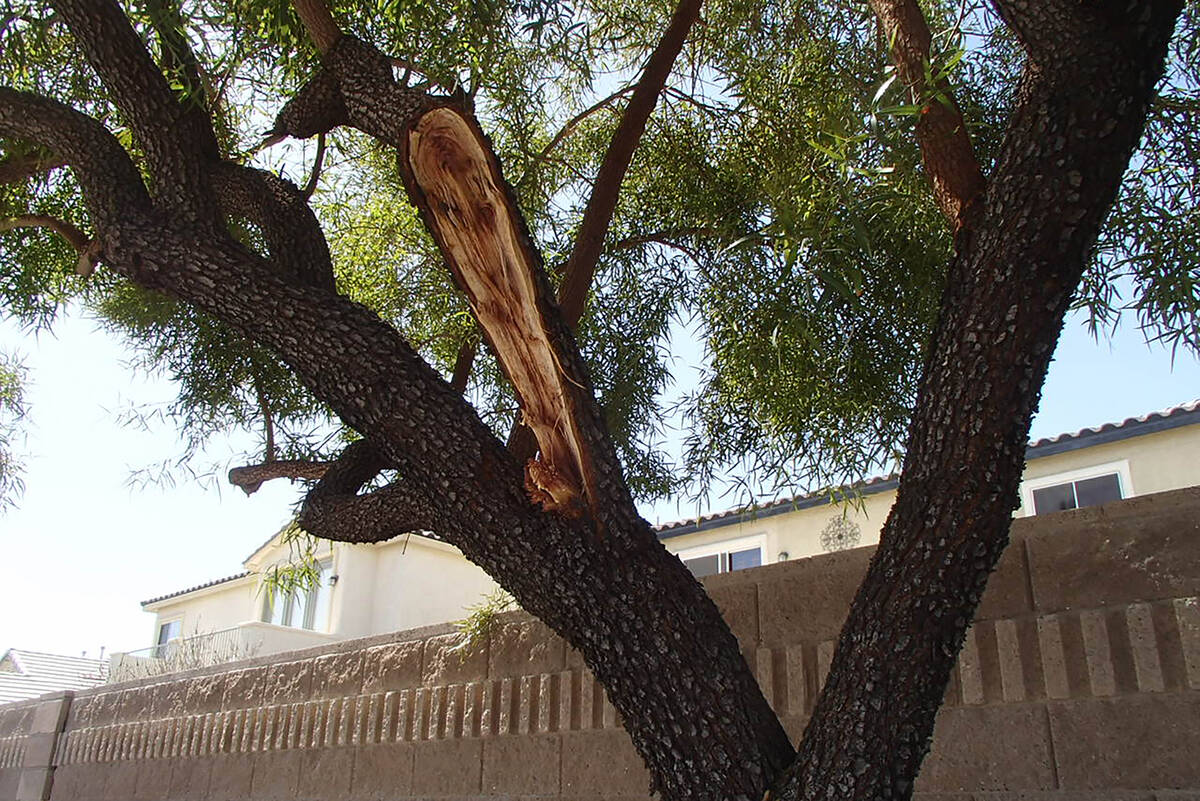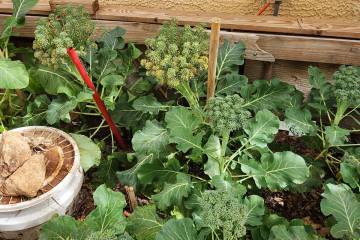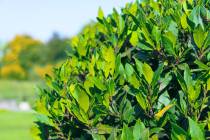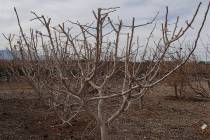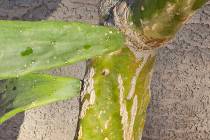Is redbud tree a good choice for pool area?
Q: My landscaper is recommending a redbud tree in the planter attached to my pool. I asked him if that’s a good tree to plant so close to the pool. He said it was, because it wasn’t messy and was colorful, but he didn’t know too much about the root system. Do you know if the root system of the redbud is a concern near pools?
A: There are several types of redbud trees, including the Eastern, Western and Mexican. All three are native to North and Central America. The Eastern form is native to the Eastern United States and spreads from Canada into northern Florida. The Western or California redbud is a native tree popular throughout California but can be found growing in the canyons of Nevada.
The Mexican or Texas redbud is a tad smaller tree common to the Chihuahuan Desert of Mexico and the drier parts of southwestern Texas.
Their differences are probably cosmetic. All three trees tolerate cold winter temperatures (where they might become deciduous) but need supplemental water during the summer and grow best if not planted in the hot full sun of western and southern exposures. In my experience, they need some afternoon shade and prefer deep watering, even though they are not considered mesic — they’re kind of hybrids between xeric and mesic.
All redbuds flower in spring but have large, brown pods in the fall that can make them look ugly at times. It’s a 15- to 20-foot tree that can be deciduous (during cold winters) in a pool area if you can tolerate flower drop in the spring and possible leaf drop in the fall.
Q: My grandfather used the Farmer’s Almanac when he planted wheat near the border of Mexico and California. What do you think of using the Farmer’s Almanac for planting vegetable seeds?
A: You might have heard the statement that he or she “plants by the moon.” There is terminology that might be new to you: new moon, gibbous moon, half moon, crescent moon and full moon. The most common choice is to plant either when the moon is getting larger (“waxing”) or getting smaller (“waning”). Waxing and waning are directional. When the right side of the moon is lit up, it is waxing. Waning illuminates the left side.
What is the difference between the moon waxing or waning? I don’t understand the why of it. Waxing means the moon is growing toward its largest size. Waning means the moon is approaching its smallest size. A gibbous moon is just larger than a half moon. A crescent moon is, technically, when anything less than a half moon is visible.
All root crops (for example, potatoes, beets, carrots and fruit trees), according to the Farmer’s Almanac, should be planted when the moon is waning.
All vegetables that we enjoy for their tops (tomatoes, peppers, lettuce, etc.) should be planted when the moon is waxing.
During the last quarter of any moon’s phase, it’s best to avoid planting at all. Work instead on improving your soil, weeding, mulching, composting or other nonplanting practices.
Q: How should you prune an older pomegranate? I saw someone teach and demonstrate at a pruning class with limbs cut very close to the trunk. Is this what is supposed to be done?
A: No, pruning cuts should not be close to the trunk but about 1 inch from it. Prune it where the attached branch starts to get smaller, making the cut as small as possible. When it is pruned, there is no stub left behind, so it is short. The idea is to make the pruning cut as small as possible. Avoid making large cuts when possible. Making large pruning cuts slows the plant’s ability to heal itself.
I held a class with biologist and plant pathologist Alex Shigo years ago. Shigo was the forest pathologist who did the original research into the spread of diseases through pruning cuts and the nonuse of pruning paint. He claimed that the pruning paints were cosmetic only and may actually hinder the healing process of the plant. He advised not to make pruning cuts close to the trunk of any tree.
According to his research, pruning paint and other wound treatments may prevent trees from compartmentalizing damage. Compartmentalization is a natural process that allows trees to isolate damage chemically and physically.
It’s best to let the tree seal on its own and leave it untreated. Unlike animals or people, woody plants are unable to heal damage. Certified arborists have been trained to understand this. Instead, plants compartmentalize wounds with layers of cells that prevent damage from spreading.
As a last resort, use unscented Vaseline on plants that produce a lot of sap after they have been pruned, such as pines, plums and grapes. Vaseline won’t affect these plants badly and will stop sap loss.
Q: I bought my house a year ago with what I was told were five jasmine bushes in the sunny back yard. This summer they are much thinner in foliage than last summer and have brown and yellow leaves on about 10 percent to 15 percent of these plants.
A: If these plants are jasmine, they are probably star jasmine. This plant originates from Japan. Star jasmine is not a desert plant and does not tolerate desert soils and hot exposures to sun. It does tolerate the heat, however. Make sure it is watered like a nondesert vine or shrub.
I am wondering if the jasmine should be moved to a less intense sunlight area. If they were planted three years ago or less, it might be worth it to move them. At three years or less, plants can oftentimes be moved to a new location. Usually, the east side of a home is a better choice if they get shade from the afternoon sun.
When moving plants, it is important to compensate for the loss of roots that occurs. This is done by eliminating some of the top. Prune about one-third of the plant to compensate for root loss. When planting in its new location make sure that about one-third of the soil is amended with compost. Water the plant with about five gallons of water each time, expanding that to about 10 gallons in a few years when it gets bigger.
If you decide to keep them in that spot, amend the surrounding soil with compost. If they are in rock, rake the rock away, put down the compost in a thin layer where they are watered, water the plants and rake the rock back.
Bob Morris is a horticulture expert and professor emeritus of UNLV. Visit his blog at xtremehorticulture.blogspot.com. Send questions to Extremehort@aol.com.



